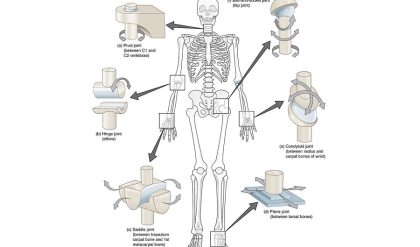Despite the development of newer technologies such as computed tomography (CT), ultrasound imaging and magnetic resonance imaging (MRI), plain film X-rays remain an important tool for the diagnosis of many disorders. In radiography, a beam of X-rays, produced by an X-ray generator, is transmitted through an object, e.g. the part of the body to be scanned. The X-rays are absorbed by the material they pass through in differing amounts depending on the density and composition of the material. X-rays that are not absorbed pass through the object and are recorded on X-ray sensitive film (Figure 1) 1.

Fig. 1: The basic setup for X-ray imaging. The collimator restricts the beam of X-rays so as to irradiate only the region of interest. The antiscatter grid increases tissue contrast by reducing the number of detected X-rays that have been scattered by tissue.
While bone absorbs X-rays particularly well, soft tissue such as muscle fiber, which has a lower density than bone, absorbs fewer X-rays. This results in the familiar contrast seen in X-ray images, with bones shown as clearly defined white areas and darker areas of tissue (Figure 2) 2. This makes conventional X-rays very suitable for scans of bones and tissue dense in calcium such as in dental images and detection of bone fractures. Other uses of radiography include the study of the organs in the abdomen, such as the liver and bladder; chest radiography for diseases of the lung, such as pneumonia or lung cancer and mammography to screen for breast cancer. X-ray fluoroscopy is used to detect a number of diseases associated with the stomach and intestine, genitals and urinary tract.

Fig. 2: A typical X-ray radiograph of the chest, in which the regions of bone appear white.
Traditionally, medical X-ray images were exposed onto photographic film, which require processing before they can be viewed and take up a lot of space in hospitals and doctors’ offices. Digital X-rays, which overcome these problems, have therefore become increasingly popular in radiography. Similar to a digital camera, an electronic detector is used instead of film. This “electronic image” is processed by a computer, enabling it to be stored digitally and viewed on screen immediately without processing.
X-ray imaging provides fast, high-resolution images and is relatively inexpensive. The average examination for most plain film examinations takes no more than 10–15 minutes and requires no special preparation of the patient. The operator, usually the radiographer (also known as a radiologic technologist), selects the amount and type of X-rays to be used according to the patient’s size, the tissue or part of the body being imaged and the amount of image contrast required. Because movement, e.g. of the lungs and diaphragm, blurs the image, patients are usually asked to hold their breath during the exposure. The X-ray picture is stored on a piece of film called a radiograph. These are interpreted by a physician specially trained to interpret them, known as a radiologist.
The ionizing radiation used in the production of X-ray images is carcinogenic and continuous exposure to these rays over time may cause damage to the body and increase the risk of cancer. However, experts consider the benefits of an accurate diagnosis and treatment to far outweigh the comparatively small risk involved in X-ray imaging.
Since the developing embryo is much more sensitive to the effects of ionizing radiation than adult patients, X-rays of any part of the body are not recommended for pregnant women. The risks of X-rays are greater for young children and unborn babies and the doctor will always bear this in mind when deciding on the need for medical imaging.


